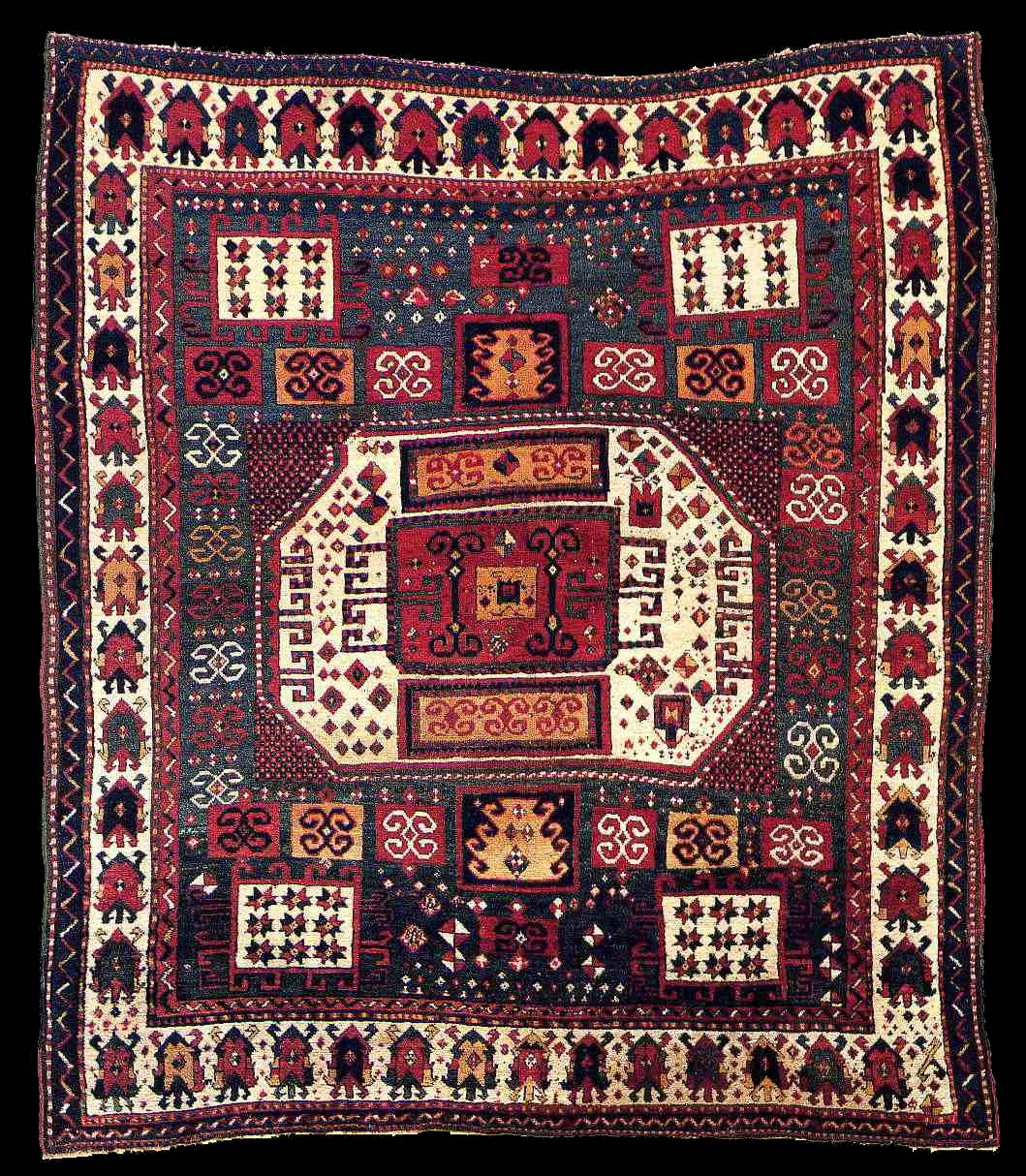|
1st half of the 19th century
The prevalence of rugs with this particular design, known as "Karachov
Kazak," suggests that large quantities of them were produced by a
19th-century cottage industry in the Caucasus. This piece is especially
colorful, and its field elements exhibit a folk-like playfulness lacking in
many "refined" examples. The palmette border motif, which appears here in a
multitude of compelling color combinations, is found primarily on 18th- and
early 19th-century Caucasian rugs. The Karachov design bears an unmistakable
resemblance to "large-pattern Holbein" carpets of the 15th and 16th
centuries, supporting the thesis that many popular Caucasian designs trace
their roots to Anatolia. The rich colors and shaggy wool of this piece are
typical of Karachov rugs, and the luminous blue-green is perhaps their most
sought-after field color.
SIZE: 85 x 73 in. (215.9 x 185.4 cm.)
WARP: wool, Z2S; ivory
WEFT: wool, Z2S x 2-4; red
PILE: wool, Z2S, symmetrical knots, h. 8, v. 8, 64 k/sq in.; ivory, dark
brown, brown, red, gold (abrash), blue-green (abrash), blue
ENDS: cut
SIDES: red and blue wool selvedge of 2 cords of 2 warps each, reinforced
with modern overcast
 |

